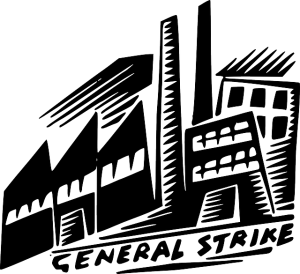General Liability (GL) insurance is a critical component of risk management for businesses, offering financial protection against claims related to bodily injury or property damage. It covers medical expenses, legal fees, and non-economic losses, extending to various business activities like premises operations, product manufacturing, and ongoing projects. GL acts as a safety net, mitigating potential financial strain and legal disputes caused by unexpected incidents such as slip-and-fall accidents, food poisoning, and product defects. Key components of comprehensive public liability policies include GL, premises liability, professional liability, and specific endorsements for niche risks. Adequate coverage is crucial for businesses in high-risk industries like retail, restaurants, construction, and real estate development to avoid significant financial ruin from legal liabilities. Setting appropriate policy limits, understanding exclusions, and considering optional add-ons like professional, business interruption, and cyber liability insurance are essential steps in enhancing business protection.
“General Liability coverage is an indispensable shield for businesses, protecting them from unforeseen legal battles and financial losses. This comprehensive guide unravels the intricacies of general liability insurance, offering insights into its core components and real-world applications. From understanding what it covers to navigating exclusions, we delve into the key aspects that every business owner should know. Discover how this vital policy can safeguard your assets, manage claims, and provide peace of mind in an unpredictable legal landscape.”
Understanding General Liability: What It Covers

General Liability, often referred to as GL, is a crucial component in any business’s risk management strategy. It provides financial protection against claims of bodily injury or property damage that may arise from your operations. This coverage is designed to shield businesses from significant financial losses that could result from incidents such as slip-and-fall accidents, product liability issues, or even damages caused by fire or other hazards.
The scope of General Liability is wide-ranging. It typically covers medical expenses for injured parties, legal fees incurred during defense against claims, and compensation for non-economic losses like pain and suffering. Moreover, GL can extend to various aspects of your business activities, including premises operations, product manufacturing, and even ongoing projects or completed work when there’s a potential for delayed injuries or damage.
Common Scenarios Where General Liability Applies

In the realm of public liability coverage, general liability plays a pivotal role in protecting businesses and individuals from unforeseen events and legal repercussions. This type of insurance is designed to safeguard against a wide range of potential claims, offering financial protection for damages arising from bodily injury or property damage caused by operations, products, or services provided. Common scenarios where general liability applies include incidents such as slip-and-fall accidents on business premises, food poisoning from restaurant services, and product defects leading to injuries or property losses.
These situations often occur in various settings, from retail stores and restaurants to construction sites and event venues. For instance, a customer slips on wet floor residue at a grocery store, resulting in an injury that requires medical attention. Alternatively, a manufacturing defect in a product causes it to malfunction, leading to property damage or personal harm when used by consumers. In both cases, general liability coverage steps in to cover the associated expenses, from legal fees to compensation for injuries or losses, providing a safety net against potential financial strain and legal disputes.
Key Components of a Comprehensive Public Liability Policy

When crafting a comprehensive public liability policy, several key components ensure robust protection for businesses and individuals against potential risks and claims. General Liability insurance is a cornerstone, covering damages arising from bodily injury or property damage caused to others during normal business operations. This includes medical expenses, legal fees, and compensatory payments up to the policy limits.
Beyond General Liability, policies often include specific coverage for things like premises liability, where businesses are held accountable for hazards on their property, and professional liability, which protects against claims of negligence or malpractice in services provided. Additional endorsements may be added to address niche risks, such as products liability for manufacturers or employers’ liability for businesses with significant employee exposure to hazardous conditions.
Business Types Often Requiring Robust General Liability Protection

Many business types, especially those dealing with direct customer interaction or offering services that carry inherent risks, require robust General Liability protection. This includes retail stores, restaurants, and service industries where accidents involving customers are not uncommon. For instance, a retail store must account for slip-and-fall incidents, while a catering service could face claims related to food poisoning. These scenarios highlight the need for comprehensive General Liability coverage to protect against potential financial losses and legal liabilities.
Additionally, construction companies, contractors, and real estate developers are often required to carry substantial General Liability insurance due to the nature of their work, which involves working in and around public spaces. Their operations may cause property damage or personal injuries, leading to significant claims. Therefore, having adequate General Liability protection is essential to safeguard these businesses from potential financial ruin.
Determining Adequate Liability Limits for Your Coverage

When crafting a public liability policy, setting adequate general liability limits is paramount. These limits represent the maximum financial protection your policy provides against claims and subsequent settlements or judgments. The right amount depends on various factors specific to your operations. One crucial consideration is the potential severity of harm and associated costs in case of an accident or injury on your premises. For instance, if your business involves handling hazardous materials, higher limits might be necessary to cover potential medical expenses and legal fees.
Additionally, assessing the type and volume of footfall on your property is essential. High-traffic areas could expose you to greater risks, justifying higher liability coverage. It’s also wise to review past claims experiences within your industry. If similar businesses in your sector have faced significant claims, it may signal a need for more substantial limits to protect against potential losses. Regularly reviewing and adjusting your liability limits ensures that your policy stays aligned with your business’s evolving risks.
Exploring Different Types of Public Liability Insurance Policies

When exploring public liability coverage, understanding the different types of insurance policies available is crucial. Businesses operate in diverse environments and face varying risks, making it essential to choose a policy that aligns with their specific needs. The most common type is General Liability insurance, which provides protection against claims of bodily injury or property damage occurring on your premises or due to your products or services. This broad coverage is suitable for many small businesses, startups, and enterprises looking for comprehensive protection at a reasonable cost.
Other specialized policies cater to specific industries with unique risks. For instance, professional liability insurance (also known as errors and omissions coverage) protects professionals like doctors, lawyers, and consultants against claims of negligence or malpractice. Similarly, product liability insurance shields manufacturers and retailers from lawsuits related to defective products. Exploring these options allows businesses to tailor their coverage, ensuring they are adequately protected in their respective sectors.
Claims Management and Defense Costs: What's Included?

When it comes to public liability coverage, one crucial aspect is understanding the extent of protection offered for claims management and defense costs. This includes legal fees and other expenses incurred during the defense against a claim or lawsuit. In the context of General Liability insurance, this coverage can be a game-changer for businesses facing potential liabilities. It ensures that not only are damages covered but also the financial burden of legal battles.
The specifics may vary between policies, but typically, such costs are included up to certain limits. This means that if a claim is made against your business, your insurance provider will step in and cover the expenses of hiring lawyers, negotiating settlements, or fighting cases in court. This not only provides financial protection but also offers peace of mind, ensuring that businesses can focus on operations rather than legal hurdles.
Exclusions to Watch Out For in Your General Liability Policy

When reviewing your General Liability policy, it’s crucial to be aware of certain exclusions that could significantly impact your coverage. These clauses outline situations where your insurance may not apply, leaving gaps in protection. For instance, policies often exclude damages arising from intentional acts or willful neglect, ensuring that claims resulting from malicious intent are not covered. Additionally, activities involving hazardous materials or war-related risks are typically excluded, as these areas require specialized coverage.
Other common exclusions include damage to your own property, employment-related injuries, and certain types of business operations. It’s essential to understand these limitations to avoid surprises when filing claims. Thoroughly reading and understanding the policy’s terms will empower you to make informed decisions regarding your liability coverage needs.
Enhancing Your Coverage: Additional Amendments and Add-ons

Enhancing your public liability coverage through additional amendments and add-ons is a strategic move that can offer robust protection for your business. Beyond the standard General Liability policies, several optional features can be tailored to address specific industry risks or unique operational scenarios. For instance, adding professional liability coverage expands protection to include claims arising from negligence in services rendered, ensuring you’re prepared for legal issues related to professional mishaps.
Other valuable add-ons may include coverage for business interruption, which compensates for lost revenue during unforeseen events like natural disasters or civil unrest. Additionally, cyber liability insurance has become increasingly crucial as digital risks evolve, offering protection against data breaches and cyberattacks. These amendments not only fortify your risk management strategy but also demonstrate a commitment to proactive safety measures, enhancing your business’s reputation and resilience in an ever-changing legal landscape.
